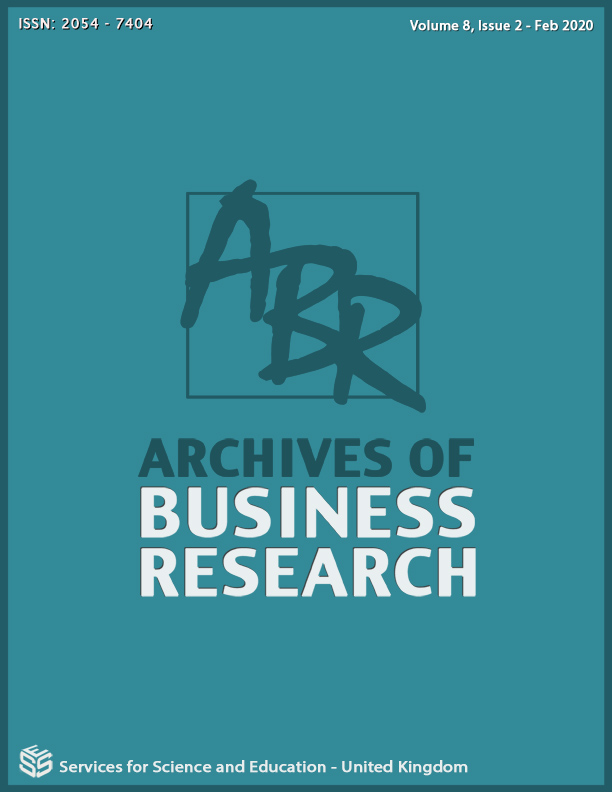An Analysis of Relationship between Stock Futures and Underlying Stock Volatility
DOI:
https://doi.org/10.14738/abr.82.7824Keywords:
Stock futures, Underlying, Volatility, Derivatives.Abstract
In this study, the researcher has undertaken an analysis to establish whether the introduction of stock futures trading influences the volatility of the underlying stock or not. In order to establish this, the researcher has taken eight companies into consideration which belongs to four different sectors such as pharmaceuticals, Banking, Oil and Gas and Fast Moving Consumer Goods sector. The researcher has taken a reference period of fourteen years which is sub-divided into two sub-groups namely pre-derivatives period, comprises of seven years from 1995-2001 and post-derivatives period, comprises of seven years from 2002-2008. The findings put forth by the study confirms increased volatility during the post-derivatives period compared to pre-derivatives period. These findings collaborates with the findings of Lee and Oak (1992), Bechetti and Robert (1999) and Kamara et.al (1992).
References
2) M, Thenmozhi (2002): Futures Trading, Information and Spot Price Volatility of NSE-50 Index Futures Contracts. www.nseindia.com
3) Bechetti, S. and Robert, D. J. (1999): “Will Increased Regulations of Stock Index Futures Reduced Stock Market Volatility?” Federal Reserve Bank of Kansas City Economics Review. (Nov/Dec), pp. 33-46.
4) Antonios Antonion and Phil Holmes (1995): “Futures Trading Information and Spot Price Volatility: Evidence for the FTSE-100 Stock Index Futures Contracts using GARCH Model.” Journal of Banking and Finance, 19:117-129.
5) Kamara, A; Miller Junior, T. W. and Segel, A. F. (1992): “Effects of Futures Trading on the Stability of Index S&P 500 Returns.” Journal of Futures Market, 12:645-658.
6) Mekenzie Michael, D; Brailsford, T. J. and Robert, W. Faff (2001): “New Insights into the Impact of the Introduction of Futures Trading on Stock Price Volatility.” Journal of Futures Market, 21(3):237-255.
7) Brorsen, B. Wade (1991): “Futures Trading Transaction Costs and Stock Market Volatility.” Journal of Futures Market, 11(2):153-163.
8) Golaka, C. Nath (2006): Behaviour of Stock Market Volatility after Derivatives. (www.nseindia.com).
9) Chatrath Arjun; Ram chander Sanjay and Sang Frank (1998): “The Role of Futures Trading Activity in Exchange Volatility.” Journal of Futures Market, 05:561-584.
10) Ganai, K. A. (2019): “Correlates of Index Futures and Spot Index Volatility: A Study of Indian Stock Market.” Archives of Business Research, 7(2) 245-252.
11) Sangmi, Khurshid and Khalid (2013): “Derivatives Trading in Emerging Economies with Special Reference to India” Journal of Accounting and Management, JAM Vol.3, no. 1 (2013).
12) Eric C. Chang, Joseph w. Cheng and Michael Pinegar (1999): “Does Futures Trading Increase Stock Market Volatility? The Case of the Nikkei Stock Index Futures Market.” Journal of Banking and Finance. Volume 23, Issue 5, May 1999, Pages 727-753.
13) Darren Butterworth (2010): “The impact of futures trading on underlying stock index volatility: The case of the FTSE Mid 250 contract.” Applied Economics Letters, Volume 7, Page 439-442, 2010.
14) Kamara, A; Miller Junior, T. W. and Segel, A. F. (1992): “Effects of Futures Trading on the Stability of Index S&P 500 Returns.” Journal of Futures Market, 12:645-658.
15) Mekenzie Michael, D; Brailsford, T. J. and Robert, W. Faff (2001): “New Insights into the Impact of the Introduction of Futures Trading on Stock Price Volatility.” Journal of Futures Market, 21(3):237-255.
16) Golaka, C. Nath (2006): Behaviour of Stock Market Volatility after Derivatives. (www.nseindia.com).






